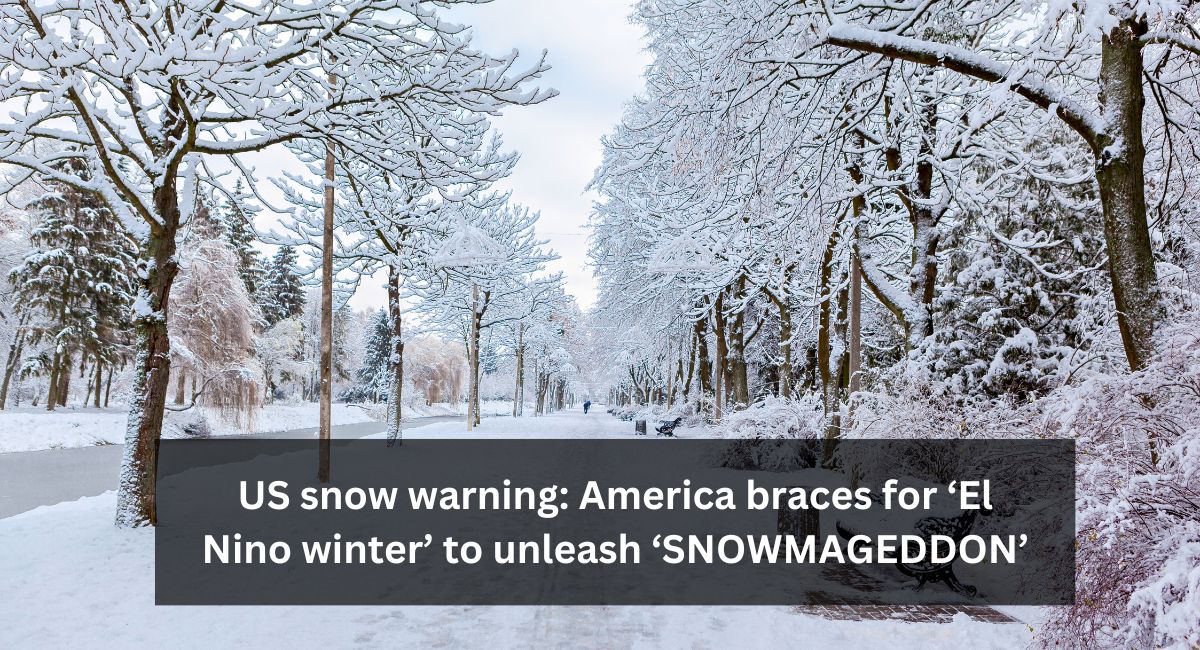As America gears up for the upcoming winter season, there’s a buzzword that’s sending chills down the spines of meteorologists and citizens alike: “El Niño.” This meteorological phenomenon, characterized by the warming of ocean waters in the central and eastern Pacific, is predicted to have a profound impact on winter weather across the United States.
The term “Snowmageddon” has been coined to describe the potentially extreme conditions that might unfold. But what exactly does an El Niño winter entail, and how prepared are Americans for its impact?
Understanding El Niño
To comprehend the gravity of an El Niño winter, it’s crucial to understand what El Niño is. It’s a climate pattern that occurs when sea surface temperatures in the tropical Pacific Ocean rise above normal levels for an extended period.
This change disrupts typical weather patterns, leading to significant climatic changes around the globe. In the U.S., El Niño typically results in wetter, stormier, and cooler conditions in the southern parts of the country, while the north experiences milder weather.
Forecasting ‘Snowmageddon’
The term “Snowmageddon” might sound dramatic, but it captures the potential severity of the winter conditions that an intense El Niño can bring. Heavier than usual snowfall, ice storms, and brutally cold temperatures could become commonplace in many regions.
The southern states, which are generally less equipped to handle heavy snowfall and icy conditions, might be particularly hard-hit. This scenario raises concerns about widespread travel disruptions, power outages, and strain on emergency services.
The Impact on Daily Life
An El Niño winter doesn’t just affect weather patterns; it has significant implications for everyday life. For the agricultural sector, unpredictable weather patterns can disrupt planting and harvesting schedules, impacting food supplies and prices.
In urban areas, heavy snowfall can paralyze transportation systems, leading to economic losses and hampering emergency and healthcare services.
Moreover, the public health impact cannot be overlooked. Extreme weather conditions can exacerbate chronic health problems, and the risks of accidents and injuries rise during periods of heavy snow and ice.
The mental health impact is also notable, as prolonged dreary weather can lead to seasonal affective disorder (SAD) for many.
Economic Implications
Economically, the effects of an El Niño winter are far-reaching. The demand for heating fuels like natural gas and oil typically spikes, leading to increased prices.
Retail businesses suffer as consumers avoid venturing out in harsh weather conditions, and the cost of snow removal and road maintenance can strain municipal budgets. On the flip side, industries like winter sports and outerwear might experience a boost.
Preparedness and Response
With the forecast of an intense El Niño, preparedness is key. Governments at federal, state, and local levels are gearing up with emergency response plans. Stockpiling road salt, updating snow removal equipment, and preparing shelters for the homeless are some steps being taken.
On an individual level, people are advised to prepare emergency kits, winterize their homes, and stay informed about weather updates.
Long-term Environmental Concerns
Beyond the immediate impact, an El Niño winter raises concerns about long-term environmental effects. Increased precipitation can lead to flooding and soil erosion, while warmer temperatures in the northern regions might affect wildlife habitats.
Moreover, the pattern of El Niño is believed to be intensifying due to climate change, suggesting that extreme weather events could become more frequent and severe in the future.
Conclusion
As America braces for the El Niño winter, the term “Snowmageddon” underscores the potential severity of the situation. While it’s impossible to predict precisely how this winter will pan out, the signs point towards a season of extremes. It’s a stark reminder of the power of nature and the importance of being prepared.
Communities across the nation are gearing up to face this challenge, highlighting the resilience and adaptability that such extreme weather events demand. As we look towards the future, the El Niño phenomenon also serves as a wake-up call about the broader implications of climate change and the need for sustainable environmental practices.
This winter, then, is not just about survival and preparedness; it’s a lens through which we view our changing world and our role in safeguarding it for future generations.

